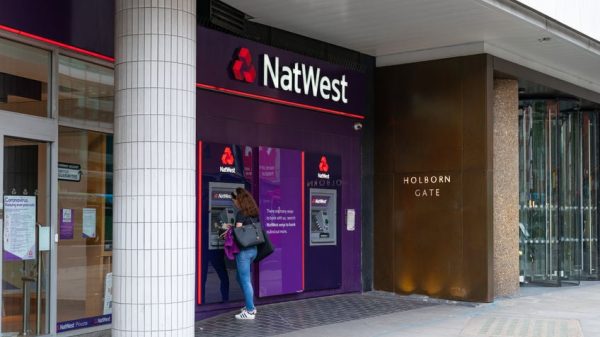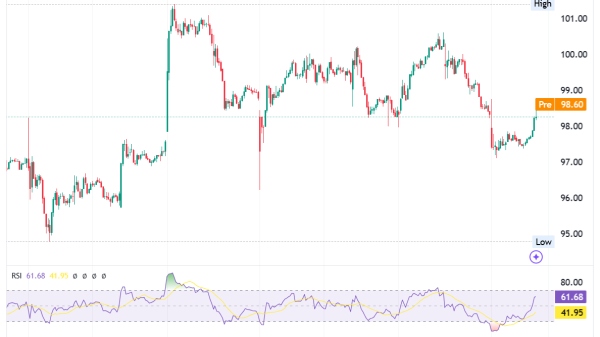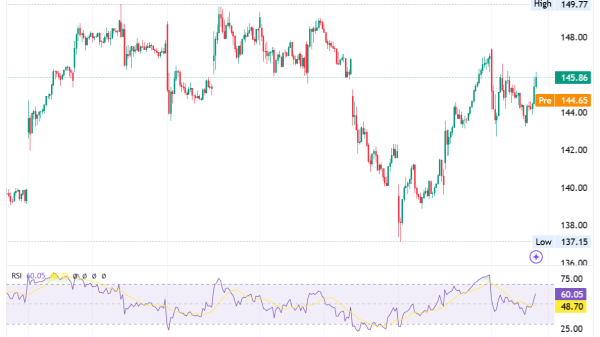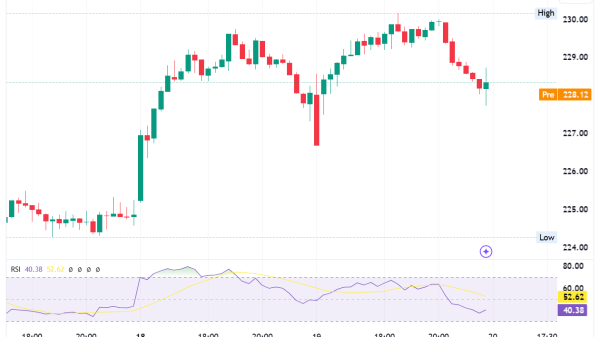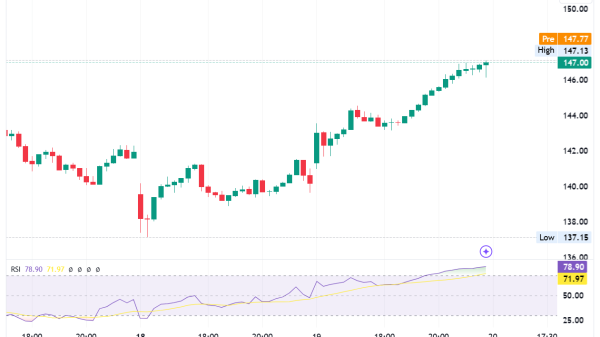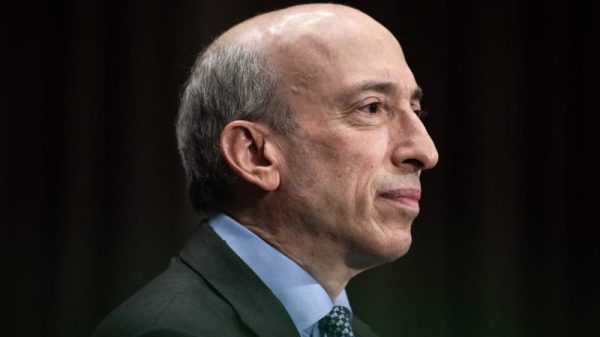
GATX Corporation (NYSE: NYSE:GATX) reported a significant increase in net income for the third quarter of 2024, with a rise to $89 million, or $2.43 per diluted share, from $52.5 million, or $1.44 per diluted share, in the same quarter of the previous year. The company’s year-to-date net income also saw an increase, reaching $207.7 million, or $5.68 per diluted share. GATX updated its full-year earnings guidance, now expecting $7.50 to $7.70 per diluted share, excluding tax impacts.
Strong performance was noted across various segments, with Rail North America and Rail International, including GATX Rail Europe and GATX Rail India, adding new railcars and experiencing growth in investment volume. The Engine Leasing segment, through the RRPF joint venture with Rolls-Royce (OTC:RYCEY), also saw a doubling of performance from the previous quarter.
Key Takeaways
- GATX Corporation’s third-quarter net income rose to $89 million, up from $52.5 million in Q3 2023.
- Full-year earnings guidance has been raised to a range of $7.50 to $7.70 per diluted share, excluding tax impacts.
- Rail North America fleet utilization was at 99.3%, with lease rates increasing by 26.6%.
- Over 1,000 railcars were acquired on long-term leases, contributing to a year-to-date investment volume of over $955 million.
- Rail International saw the addition of nearly 900 new cars in Q3 and a year-to-date investment volume of over $190 million.
- The RRPF joint venture with Rolls-Royce showed strong performance, with leased engines increasing to 415 and improved lease rates.
Company Outlook
- GATX is cautious about Q4 remarketing income due to seasonal trends and a slowdown in buyer activity.
- Anticipates modest remarketing income between $90 million and $100 million for the year.
- Plans to provide detailed expectations for 2025 during the January earnings call.
Bearish Highlights
- Q4 is expected to see a slowdown in remarketing income due to seasonal trends and the winding down of buyers’ capital programs.
Bullish Highlights
- Strong performance in Rail North America, Rail International, and Engine Leasing segments.
- Positive future expectations for lease rates if supply-side conditions remain stable.
Misses
- Lease rates showed a minor decline from Q2 to Q3, though they are still considered high overall.
Q&A Highlights
- No further questions were asked during the call, indicating clear communication of the company’s status and outlook.
GATX Corporation’s financial results for the third quarter of 2024 reflect a company experiencing strong growth and performance across its various segments. The updated full-year earnings guidance is a testament to the company’s positive trajectory, and despite some expected seasonal slowdowns, the overall outlook remains optimistic. As GATX prepares to provide a detailed forecast for 2025 in the upcoming January call, investors and stakeholders can look forward to more insights into the company’s strategies and market expectations.
InvestingPro Insights
GATX Corporation’s strong financial performance in Q3 2024 is further supported by data from InvestingPro. The company’s market capitalization stands at $5 billion, reflecting its significant presence in the rail and aircraft leasing industry. GATX’s revenue growth of 12.79% over the last twelve months aligns with the reported increase in net income and the positive performance across its business segments.
One of the InvestingPro Tips highlights that GATX “Has raised its dividend for 13 consecutive years,” which is particularly relevant given the company’s strong financial results. This consistent dividend growth demonstrates GATX’s commitment to shareholder returns and its financial stability. Additionally, the tip noting “Impressive gross profit margins” is corroborated by the InvestingPro data showing a gross profit margin of 72.94% for the last twelve months, underscoring the company’s operational efficiency.
The current P/E ratio of 21.7 suggests that investors are willing to pay a premium for GATX’s earnings, possibly due to its strong market position and growth prospects. However, it’s worth noting that GATX “Operates with a significant debt burden,” according to another InvestingPro Tip. This factor should be considered alongside the company’s positive performance and growth initiatives.
For investors seeking a more comprehensive analysis, InvestingPro offers 11 additional tips for GATX, providing a deeper understanding of the company’s financial health and market position. These insights can be valuable for making informed investment decisions in light of GATX’s recent earnings report and future outlook.
Full transcript – GATX Corp (GATX) Q3 2024:
Operator: Thank you for standing by. At this time, I would like to welcome everyone to today’s GATX Corporation Third Quarter Earnings Call. All lines have been placed on mute to prevent any background noise. After the speakers’ remarks there will be a question-and-answer session. [Operator Instructions] Thank you. I’d now like to turn the call over to Shari Hellerman, Head of Investor Relations. Shari, please go ahead.
Shari Hellerman: Thank you Greg. Good morning, and thank you for joining GATX’s 2024 Third Quarter Earnings Call. I’m joined today by Bob Lyons, President and Chief Executive Officer; and Tom Ellman, Executive Vice President and Chief Financial Officer. As a reminder some of the information you will hear during our discussion today will consist of forward-looking statements. Actual results or trends could differ materially from those statements or forecasts. For more information, please refer to the risk factors included in our earnings release and those discussed in GATX’s Form 10-K for 2023 and our other filings with the SEC. GATX assumes no obligation to update or revise any forward-looking statements to reflect subsequent events or circumstances. Earlier today, GATX reported 2024 third quarter net income of $89 million or $2.43 per diluted share. This compares to 2023 third quarter net income of $52.5 million or $1.44 per diluted share. The 2024, third quarter results include a net negative impact of $2.5 million or $0.07 per diluted share from tax adjustments and other items. Year-to-date, 2024 net income was $207.7 million or $5.68 per diluted share. This compares to $193.2 million or $5.30 per diluted share for the same period in 2023. The 2024 year-to-date results include a net negative impact of $9.9 million or $0.27 per diluted share from tax adjustments and other items. The 2023 year-to-date results include a net negative impact of $1.1 million or $0.03 per diluted share from tax adjustments and other items. These items are detailed in the Supplemental Information section of our earnings release. And now I will briefly address each of our business segments. At Rail North America, fleet utilization was 99.3% at the end of the quarter, and our renewal success rate remained high at 82% in the quarter. The renewal rate change of GATX’s lease price index was positive 26.6% for the quarter and the average renewal term was 59 months. Rail North America continues to experience strong demand for the majority of car types in our existing fleet. Absolute lease rates for many car types to remain at historically high levels. And we continue to take advantage of the favorable lease rate environment by lengthening these terms. The secondary market for railcars in North America remains robust. Rail North America’s remarketing income was over $43 million during the quarter. This bring total remarketing income for the year to over $96 million, which is essentially our full year expectation. While we are always active in the secondary market, any fourth quarter remarketing activity will likely be modest in size and very opportunistic. In addition to placing deliveries of new railcars under our committed supply agreement, we also acquired over 1,000 railcars in the spot and secondary markets. They are on long-term leases with attractive rates. Rail North America’s year-to-date investment volume was over $955 million. Turning to Rail International. GATX Rail Europe and GATX Rail India performed well as expected. We continue to experience increases in renewal lease rates versus the expiring rates for many car types. Additionally, we continue to take delivery of new cars in Europe and India, adding a combined total of nearly 900 cars during the third quarter. Year-to-date, Rail International’s investment volume was over $190 million. Within Engine Leasing. Our joint ventures with Rolls-Royce and our wholly-owned aircraft engines portfolio are both performing very well, driven by continuing strong demand for global passenger air travel. At RRPF year-to-date investment volume totaled approximately $500 million, reflective of the joint venture’s focus on growth. Additionally, GATX added four aircraft per engines to our wholly-owned portfolio for approximately $95 million in the quarter. Our year-to-date direct-to-engine investment volume was over $166 million. Finally, as we mentioned in the earnings release, reflecting current market conditions and our year-to-date performance, we’ve updated our 2024 full-year earnings guidance to a range of $7.50 to $7.70 per diluted share excluding any impact from tax adjustments and other items. And those are our prepared remarks. I will hand it back to the operator, so we can open it up for Q&A.
Operator: Thanks Shari. [Operator Instructions] It looks like our first question today comes from Bascome Majors with Susquehanna International Group. Bascome please go ahead.
Bascome Majors: Good morning and thanks for taking my questions. The guidance increase at the low end there. I realize it is not massive, but could you walk us back to how you define the year originally, breaking it down by some items and let us know maybe what puts and takes there have been in your original outlook that led to that nine months later? Thank you.
Tom Ellman: Yes. Bascome, this is Tom. If you go back and take a look at the January earnings call transcript, you will see where Bob kind of walked through segment by segment and then went into some more detail in various areas about how we saw the year coming out. And if you compare that to what you actually see for the third quarter in almost every area, it is going to be right on. The one area that is a little bit different is the remarketing gains at Rail North America that Shari alluded to. And that really is the key driver for taking up the low-end of the guidance range. The rest of Rail North America, whether you look at revenue, net maintenance, interest cost those are all on a year-to-date basis, very similar with that guidance we laid out. Same with Rail International, same with the Engine Leasing business. So really, the area of variance comes down to that one piece.
Bascome Majors: Thank you for that. And maybe to that point, at least in public equity investor circles, there is been some concern that — that particular level of P&L from gains is unsustainable longer-term, but that concern has been around for 2.5 years. And certainly, if we talk to you guys or other people in the markets, no one is really noting a change in the supply/demand and profit dynamics of that marketplace. Can you talk a little bit through how you feel about the durability of the attractive secondary market that you are able to sell into? And maybe some comments on the market specifically and then to maybe the assets you think you are able to supply the market, maybe company specifically as well, just so we can understand kind of how that might shape over the next two or three years. Thank you.
Bob Lyons: Bascome, it’s Bob Lyons. I’ll take that one. And I would go back a couple of years ourselves here and say, when we were looking at an environment where interest rates were likely going to be moving higher, we also were somewhat uncertain about what kind of an impact that might have in the secondary market. A lot of the buyers of railcars in the secondary market, they run the gamut from other large leasing entities to smaller privately owned-leasing companies. And so we weren’t quite sure how the rising interest rate environment would impact it would have on some of those buyers. So we were a bit cautious, too. But fast forward two years, we are now — it appears to be on the backside of that rising rate environment and one where rates have either stabilized around their way down, and demand has remained very robust. And I’d say, that’s across the breadth and depth of the buyers that we sell to, and it is a lengthy list. We put assets out for sale in the secondary market. There is probably anywhere between 20 or 30 different entities that would be interested in receiving those offering memorandums, those sale packages, we participate as well. We are a big buyer of railcars in the secondary markets that we have our fingers on the pulse on both sides, and the market is really healthy. Now what appeals to the buyers, I think potentially what’s unique about GATX is the diversity of the portfolios we can put into the market because we have 160 different plus types of railcars, 400, 500 different types of customers, different commodities and our customer base is very high quality. So when we put assets for sale in the secondary market, buyers are looking at the fact that there is always a lease attached and it is four, five, six, seven years, and it’s with a very good credit, there is a comfort level there. And I think an experience level for a lot of our buyers that they know what they are getting when they buy assets from GATX, quality customers, quality asset and a well-structured lease. So that would be my take on the secondary market, but in general, very robust.
Bascome Majors: And maybe to focus on — from the supply side, our — are you getting to a point where you are happy and content with the makeup of your North American fleet? Or is this a well that GATX can keep drawing from year or two down the road if the market does remain as attractive as it is today?
Bob Lyons: Well, I think that with 110,000-plus car fleet and a supply agreement and a very active program of buying assets in the secondary market. The well is pretty deep. It is very deep. And I look even at this year, flipping it around secondary market as a buyer. Half of our investment volume year-to-date at Rail North America has been in the spot new car market and in the secondary market. So we are either buying new cars directly from the builders on a spot basis or we are in the secondary market buying. So we’re adding to the fleet through a number of different avenues. And we don’t get overly focused on fleet size. So it’s not like we have a goal of, let’s get to 130,000 cars or 140,000 cars. We want to generate the best risk-adjusted return we can for the shareholder. That’s priority Number #1. And so we’ll opportunistically add cars to the fleet, but the economics have to work and there is ample opportunity right now to do that.
Tom Ellman: And Bascome, just to put some numbers to some of those gains over time. So if you go back 15 years or so, you will see that on average, we had $65 million a year or so of gains on sales at Rail North America. And during that period of time, the low year was 2020, the first year at COVID which was almost $40 million that year. So to your point about the sustainability clearly, there is a track record that there are material gains kind of in all markets.
Bascome Majors: Thank you very much.
Tom Ellman: Thank you.
Operator: Thanks Bascome. And our next question comes from the line of Brendan McCarthy with Sidoti. Brendan please go ahead.
Brendan McCarthy: Hi everybody. Thanks for taking my questions here. I just wanted to follow up on the remarketing income side. It sounds like obviously, broadly speaking, demand remains robust, as you mentioned. But what kind of underpins your expectations for a more modest turnout looking ahead to Q4.
Bob Lyons: Yes. Brendan, it is Bob Lyons. We came into the year expecting anywhere between $90 million and $100 million of remarketing income. I think we’re already in the [mid-90s, $96 million] (ph), so the vast majority of the assets we kind of had circled for potential sale this year have been sold. So we’ll continue to be in the market in the fourth quarter opportunistically, but no significant plans for sale. And a lot of times, the buyers of our assets, they have a capital program as well. So they have allocated dollars coming into each year that they are going to use to buy assets in the secondary market. And historically, what we’ve seen is a lot of times you get into the fourth quarter and those capital programs are winding down for the year and then get refreshed in January. So it is just kind of the cadence of both buy and sell side.
Brendan McCarthy: Got it. That makes sense. So you’ve seen historic seasonality there just a lower level in Q4 in past years?
Bob Lyons: It is hard to pinpoint it exactly because you could have a couple of transactions that generate a sizable gain. Maybe the volume isn’t there, but the gain is larger in Q4. So it is a little bit difficult to predict. But in general, whether it is buy side or sell side, the pace of activity does tend to slow a little bit in Q4.
Brendan McCarthy: Understood. Understood. And wanted to turn to the RRPF earnings. It looked like a really strong quarter there. I think it doubled from the second quarter of 2024. Can you talk about the trends there and what drove the strong results?
Tom Ellman: Yes. So RRPF, the joint venture with Rolls-Royce, it is been a good year. But consistent with my comments early on, very much in-line with our expectations coming into the year. We expected lease rates to improve. We expected to have more engines on lease. For example, the portfolio from Q3 a year ago to Q3 now, has gone from 395 engines to 415 engines. So 20 additional engines at higher rates. That’s really what’s driving the improvement, but again, very much in-line with our expectations.
Brendan McCarthy: Okay. And sorry if I missed this, but do you happen to have the breakdown between remarketing income there and lease revenue?
Tom Ellman: Yes. So for the quarter, it was about 50-50 and year-to-date, it’s about two-thirds, one-third operating income versus remarketing.
Brendan McCarthy: Got it. Okay. That’s helpful. And just wanted to look at the Rail North America fleet, more broadly speaking, I think this is a number we’ve talked about in the past, but what kind of runway can we look at when you look at the Rail North American fleet, how much of that has been repriced at these higher lease rate levels. I guess my question is how much of the fleet is kind of do to be repriced higher at this point in time?
Bob Lyons: Yes, Brendan, if you think about where the lease rate environment has gone over the course of the last seven years or eight years, 2016 to 2021, it was a negative real challenging environment. ’22, it started to turn positive. So if you kind of look at the number of renewals we do in a given year, it is about half roughly that have repriced in about half yet to go.
Q – Brendan McCarthy: Great. Great. That’s very helpful. That’s all from me.
Bob Lyons: Thank you.
Operator: Great. Thanks Brendan. [Operator Instructions] And our next question comes from the line of Justin Bergner with Gabelli Funds. Justin please go ahead.
Justin Bergner: Good morning Bob, good morning Tom, good morning Shari.
Shari Hellerman: Good morning.
Bob Lyons: Good morning.
Tom Ellman: Good morning.
Justin Bergner: Could you comment on sequential lease rates?
Bob Lyons: Sure. So as we’ve noted in recent quarters, Justin, in general, the rates have flattened out, albeit at very high levels. And the pricing environment overall remains very favorable, high utilization, high renewal success rate. 2Q to 3Q, we did see a very small downtick in absolute lease rates like very low-single digits. And I’d say, in my view that’s not unexpected to see some small movement, either positive or negative and in an environment where rates have generally leveled off at high levels. Yes, I would also add, we touched on this a little bit previously, but a key positive catalyst right now impacting the lease pricing environment is the supply side of the railcar sector. Pricing is in a good place, partly due to the positive dynamics at work in the supply side. We are not seeing significant overbuilding or speculative orders. And those points have really been at the center of what has caused major rate swings in the past. And also with the supply side stable, when we have seen some degree of oversupply in a particular car type, it self-corrects pretty quickly through scrapping. So overall, we’re very encouraged by where we are at in the rate environment.
Justin Bergner: Got it. That’s helpful. Thanks. Second question would be as it relates to RRPF, when all is said and done for the year, do you expect continuing asset sales in the joint venture to kind of get you back to the historical mix of operating versus disposition earnings for that JV?
Tom Ellman: Yes. So Justin, over time, you can certainly calculate an average. But if you look at the individual years, it can vary quite a bit year-to-year. But what you’ve seen year-to-date it is probably a fair guess to be — it will be closer to that 50-50 by the time we are done for the year than the two-thirds, one-third we are at now, but calling the exact amount is hard. Just like at Rail North America, the timing of when those transactions occur, it is hard to get overly precise.
Justin Bergner: Got you. And then I mean, with respect to that long-term average though, like on a multiyear basis, there is nothing that would have changed to make it more operating earnings versus disposition earnings kind of looking out on a multiyear basis? Is there?
Tom Ellman: So on the margin? The answer would be yes because the fleet size is getting bigger, but that takes a while for that to materially change.
Bob Lyons: Fundamentally, the fleet is getting larger at better rates, while we are achieving very attractive returns on those investments. But as Tom said, that takes a while to bleed into the portfolio.
Justin Bergner: Got it. Lastly, if I could just ask about Rail International. I mean the profitability seems very healthy this quarter compared to last quarter and the prior year. Anything specific going on? Is this sort of a higher level of sustained profitability? Or are there some one-offs that helped the third quarter?
Bob Lyons: No material one-offs, continued very good performance both at GATX Rail Europe and GATX India. The economic environment in Europe can be — is a bit more challenging, but there is still — the team there is doing an excellent job keeping cars utilized and achieving rate increases for the vast majority of the fleet. Intermodal remains a bit of a challenged spot there. It is not a big part of the fleet, but it’s the one that has held utilization back a little bit. But overall, just very good performance, very good cost control. And in India, putting a lot of new wagons to work in a market that just continues to grow pretty dramatically.
Justin Bergner: Great. Thank you for taking my question.
Bob Lyons: Thanks Justin.
Operator: Thank you Justin. And it looks like we’ve got another question from Bascome Majors with Susquehanna International Group. Bascome please go ahead.
Bascome Majors: Thank you for the follow-up. Just two questions. How far are you through repricing the North American fleet at — call it, ’22 or later levels? And just high level, I know you haven’t gotten through your budgeting period yet, but any puts and takes, as we think about sending expectations for 2025? Thank you.
Bob Lyons: Yes. Bascome, it is Bob. It is about half roughly, that is renewed at — since the pricing environment shifted to the positive side in 2022. So about half to go. And with regards to 2025, we’ll come back, obviously, in the beginning of January with a full outline and segment by segment run through on some of the key line items. So we will do that again for you in January. But in general, I’d say, we are very encouraged by the environment we are in right now. The pricing environment, lease pricing environment in Rail North America remains in a real good spot. And as long as we don’t see any irrational behavior on the supply side, we would expect that to continue. And if you look at GATX overall roughly 55%, 60% of our total segment profit is in North America and the balance is in international markets. So our international businesses continue to grow, and we like the position we are in, in all of those and the recovery in Engine Leasing has been more dramatic than probably anybody anticipated just a few years ago. But it is a testament to our team at RRPF and the folks at Rolls-Royce, who have partnered with us. We partner with them, and they’ve done an excellent job managing that portfolio. So we feel good about that as well.
Bascome Majors: Thank you.
Operator: All right. Thanks Bascome. [Operator Instructions]. All right. It doesn’t look like we have any further questions. So I will now turn the call back over to Shari Hellerman. Shari, the floor is yours.
Shari Hellerman: I’d like to thank everyone for their participation on the call this morning. Please contact me with any follow-up questions. Thank you.
Operator: Thanks, Shari, and ladies and gentlemen that concludes today’s call. Thank you for joining us, and you may now disconnect. Have a good day, everyone.
This article was generated with the support of AI and reviewed by an editor. For more information see our T&C.



